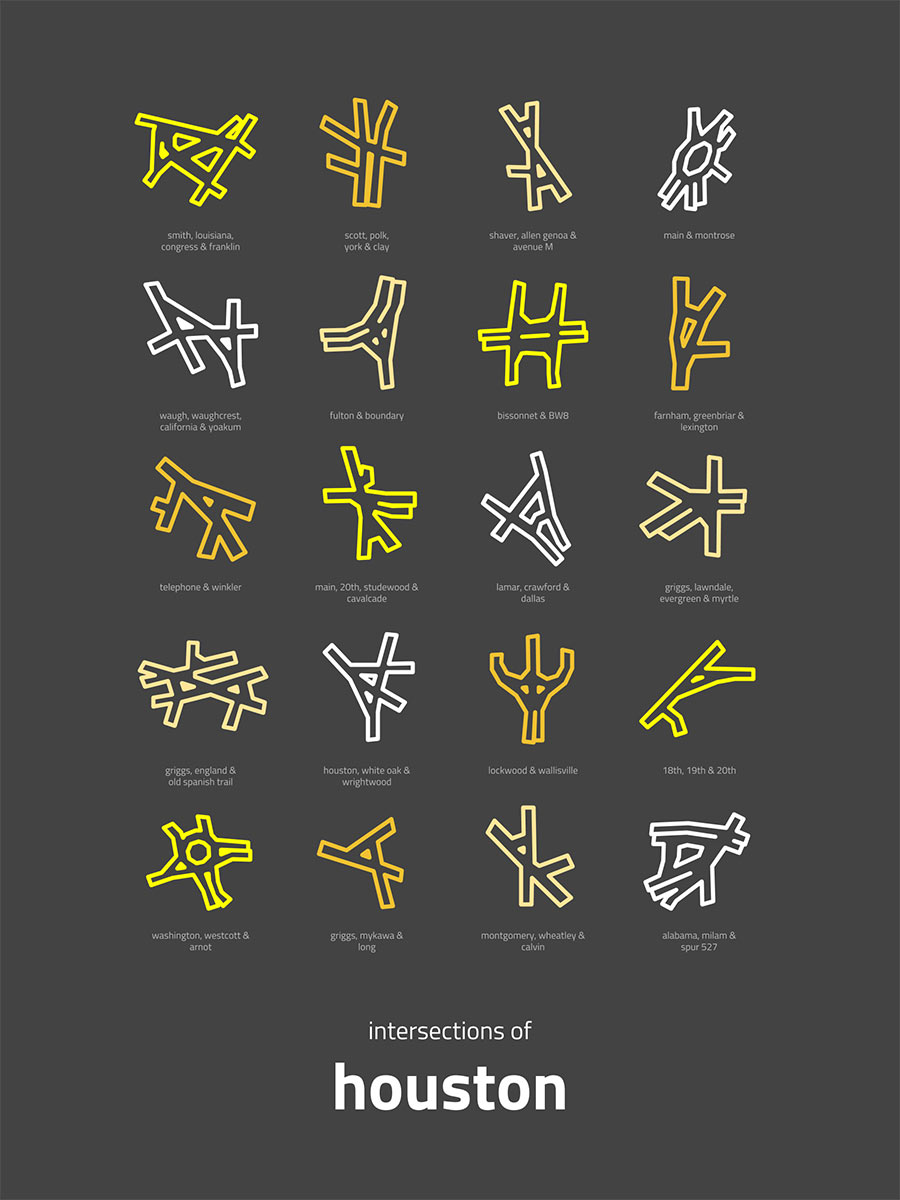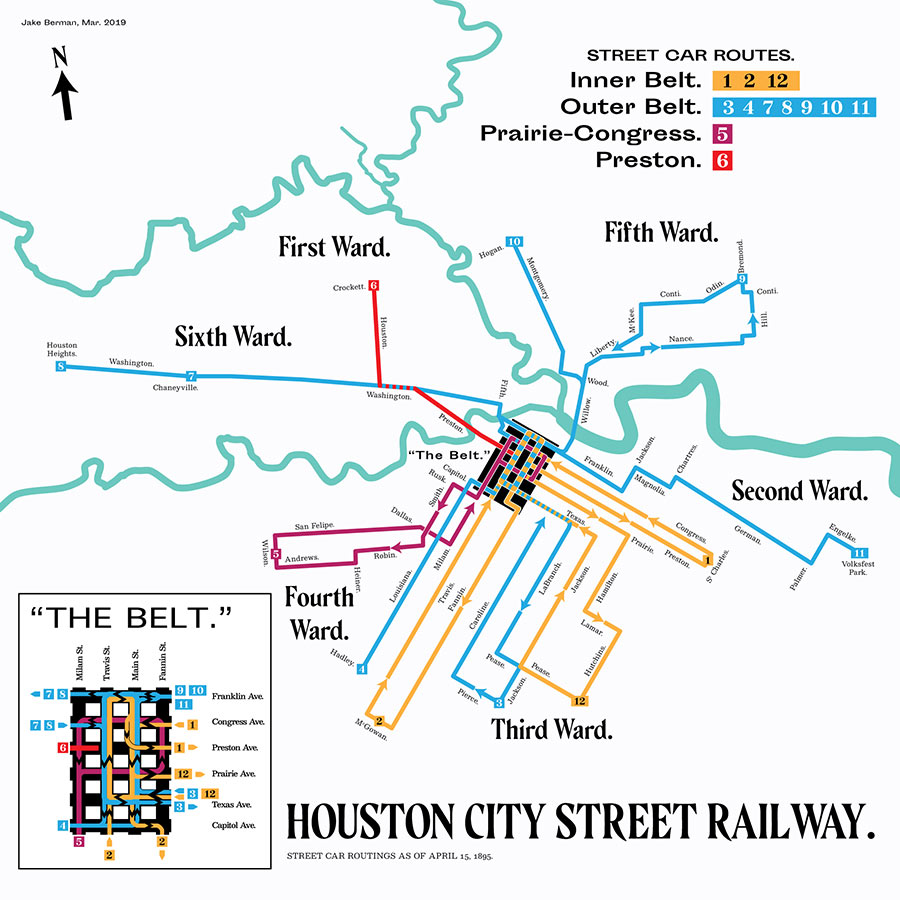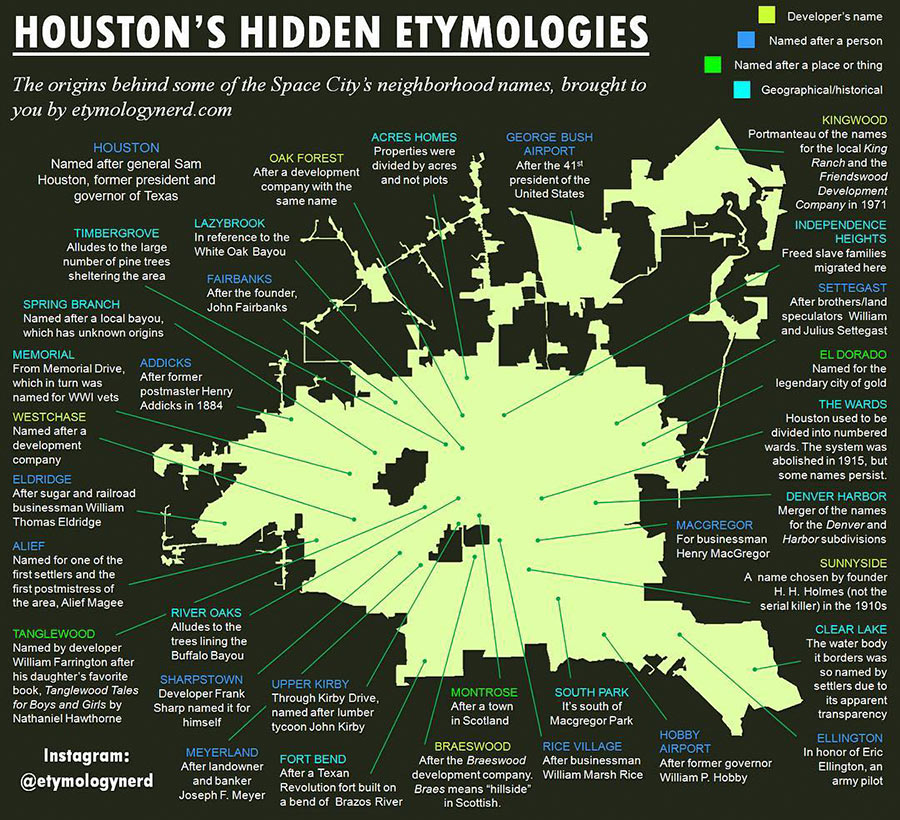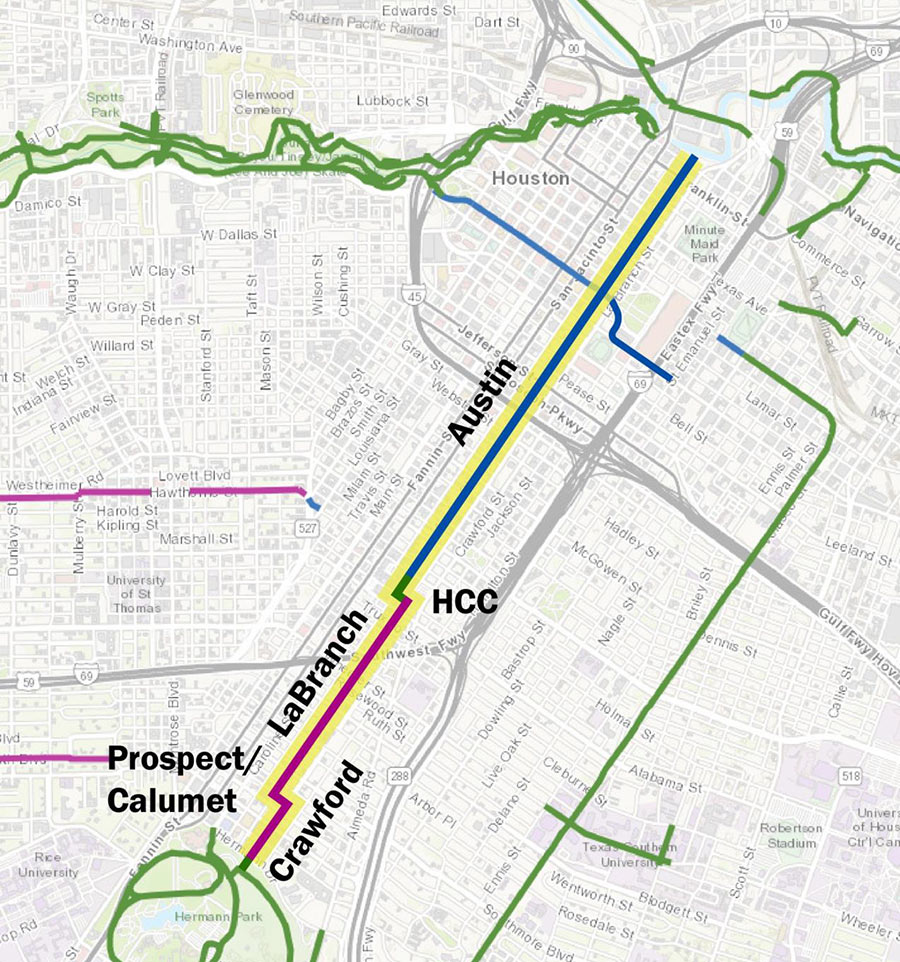
Anyone in the habit of leaving the house knows that Houston’s streets are really best appreciated from a distance. And although he’s not a native, Seattle artist Peter Gorman appears to agree. His recent work, “Intersections of Houston,†shown above, is a series of 20 mini-maps depicting some of the city’s most notably tangled roadway crossings. Some — like the nexus of Scott, Polk, York, and Clay streets (top row, second from the left) — take shape at the borders between Houston’s multiple, incongruous street grids. (The Allen brothers laid out the oldest grid parallel and perpendicular to Buffalo Bayou; later planners favored a more north-south orientation. In both cases, the resulting frameworks are some of the longest-lived legacies of the city. We’ve been stuck with them far longer than most of the buildings they contain.)
Others meander to get around park space: See Lamar, Crawford, and Dallas (third row, third from the left). And then there’s that special subset: intersections that do less to fit into their surroundings than they do to stand out as products of intrepid traffic engineering approaches. Take Lockwood Dr. and Wallisville Rd. (fourth row, third from the lift) for instance; it’s really just a claw-like take on a T-intersection.
***
Gorman creates similar artwork depicting other cities as well — they’re part of a series he calls Barely Maps. He plans to assemble them all into a book to be released, he hopes, by next Christmas.
- Barely Maps [Etsy]
Image: Peter Gorman





Dang it… still missing Park Place and I-45 (The Circle). Still, pretty cool. Getting a poster done up of this for XMAS.
Houston needs to graduate up with its intersections and follow the leadership of England, France, etc., where there are 20,000 + ROUNDABOUTS in each country. Safer. Traffic never stops. No possibility of T-bone collisions. Cheaper to build and maintain since there are no electronic traffic signals.
Some starting to appear in this country, with significant drops in injuries and fatalities. Google roundabouts and you will see
This is cool, but also a little terrifying.
I second the roundabout motion mentioned by Ray. The new roundabout built in CityCentre works to a T and has improved flow for cars and pedestrians.
Non-Houstonian art about Houston feels super inauthentic.
There are problems with roundabouts, though. In dense urban environments, land prices are often astronomically high. Roundabouts use more land. Converting urban intersections to roundabouts would entail the liberal use of eminent domain, eating quite often into precious commercial parcels. These are the parcels that often represent Houston’s only opportunities for inner-city densification, which is an essential part of any forward-looking regional mobility strategy. And roundabouts add a fair bit of distance for pedestrians trying to get across catty-corners.
.
But yeah, turn the intersection of Red Bluff & Fairmont Pkwy into a roundabout and I’ll say “Sure. No problem. Great idea.” And then I’ll say: “Sure would be nicer though, if it was the freeway that had been intended.”
Yep, traffic circles (roundabouts). Get ’em. At the least, every four-way stop should be converted.
How could they leave out Bellaire/Bissonnet?
@ PracticallyYours
because the mentioned intersection is a simple 4 way intersection, period. The only uncommon thing about it is Bissonnet is at an angle. If that is enough deviation from a 90 degree intersection to cause confusion, maybe the person behind the wheel should not be driving in the first place.
I’m surprised that the convergence of 18th, 19th and 20th Streets made the cut but the broader intersection complex of W. 18th Street, Ella Boulevard and the T.C. Jesters, East and West, did not.
These look like the Riverdale Griffins and Gargoyles symbols !
I love this poster!!!
The modern roundabouts really should be considered for certain intersections of which there are many candidates in Houston. They are THE BEST!! Traffic conditions, existing ROW and geometries all need to be considered. The multi-lane Washington on Westcott (WOW) Roundabout was built using existing public ROWs with the exception of 395 SF that was purchased from a private property owner. Single-lane roundabouts are useful too, so don’t rule those out for keeping traffic moving.
Washington & Westcott was a prime candidate, I agree. Other decently-good opportunities exist nearby at the jumble surrounding 20th & N. Main, 18th & Ella, or White Oak & Houston Ave. I’m not saying never to do it, only to be very judicious about their implementation.